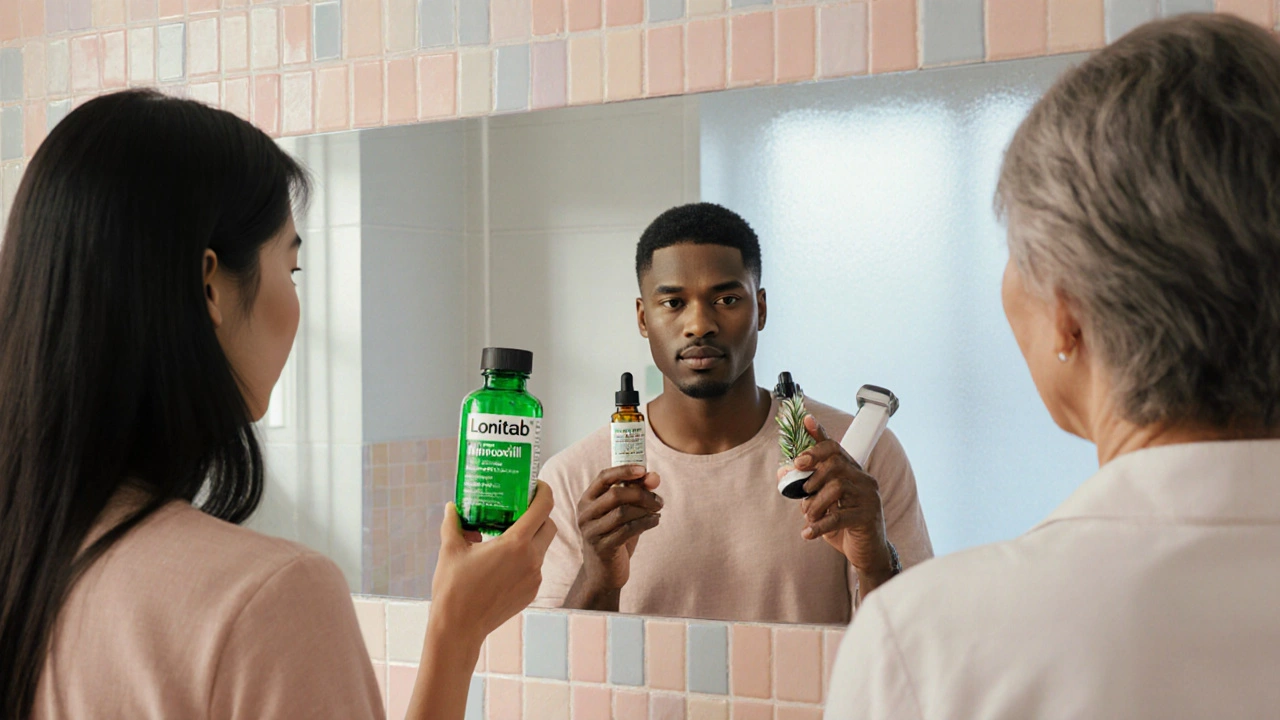Topical Hair Loss Medication: What You Need to Know
When dealing with Topical Hair Loss Medication, a product applied directly to the scalp to stimulate hair growth or slow loss. Also called hair regrowth topical, it is the frontline choice for many people facing thinning hair. Topical hair loss medication works by delivering active ingredients straight to hair follicles, bypassing the digestive system and reducing systemic side effects. This approach is especially popular for treating Alopecia, a broad term for hair loss conditions ranging from pattern baldness to sudden patchy loss. The most widely studied ingredient is Minoxidil, a vasodilator that prolongs the growth phase of hair follicles, often marketed under brand names like Rogaine. By understanding how these elements interact, you can set realistic expectations and choose a regimen that fits your lifestyle.
How the Core Ingredients Interact
Minoxidil isn’t the only player on the market. Many formulations combine it with DHT blockers, compounds that inhibit dihydrotestosterone, the hormone most responsible for male‑pattern baldness. DHT binds to receptors in scalp follicles, shortening the growth cycle and eventually causing the follicles to shrink. By limiting DHT’s impact, topical blockers help preserve existing hair while minoxidil pushes new growth. The synergy between a vasodilator and a hormone inhibitor creates a two‑pronged attack: one boosts follicle activity, the other protects the follicles from premature miniaturization. The typical usage pattern—applying the solution twice daily and leaving it on the scalp—matches the semantic triple "Topical hair loss medication requires consistent application" and ensures the active agents stay in contact long enough to be effective.
Real‑world results vary, and several factors shape outcomes. Age, the extent of existing loss, and genetic predisposition all play a role. For early‑stage alopecia, users often notice thicker hair within three to four months, while advanced thinning may need six months or more to see visible change. Side effects are usually mild—dry scalp, itching, or a light tingling sensation—but they rarely outweigh the benefits when the product is used as directed. It’s also worth noting that stopping treatment typically leads to a gradual return to the pre‑treatment state, illustrating the semantic link "Topical hair loss medication influences hair growth cycle" and reinforcing the need for ongoing use to maintain gains.
Below you’ll find a curated list of articles that dive deeper into specific products, compare costs, and answer common questions about safety, efficacy, and best‑practice tips. Whether you’re just starting to explore your options or looking to fine‑tune an existing routine, these resources give you a practical roadmap for making informed decisions about your scalp health.
